By Russ Ouellette
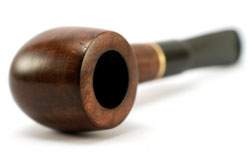 The time is the mid-1880s and the location is London, England, specifically a second-floor room at 221B Baker Street. The room is rather dark, and there is only one figure in residence at the moment. He’s a tall, slender man with a receding hairline wearing a well-worn dressing gown. He sits quietly in intense rumination, obviously concentrating on something which puzzles him. A thick wreath of blue-white smoke surrounds his head and blankets the rest of the room. Of course, the object of this observation is none other than the world’s only professional consulting detective, the redoubtable Sherlock Holmes.
The time is the mid-1880s and the location is London, England, specifically a second-floor room at 221B Baker Street. The room is rather dark, and there is only one figure in residence at the moment. He’s a tall, slender man with a receding hairline wearing a well-worn dressing gown. He sits quietly in intense rumination, obviously concentrating on something which puzzles him. A thick wreath of blue-white smoke surrounds his head and blankets the rest of the room. Of course, the object of this observation is none other than the world’s only professional consulting detective, the redoubtable Sherlock Holmes.
Certainly Holmes is one of the most iconic characters in crime fiction, as is evidenced by his amazing popularity after more than 100 years since his creation. No literary creation has been featured in films, television programs, radio serials, spoofs and pastiches more than Holmes. His creator was a not-very-successful physician named Arthur Conan Doyle, who aspired to be a writer, and submitted his manuscript for "A Study in Scarlet", which wound up being published in Beeton’s Christmas Annual. The story evoked a groundswell of interest, so much so that Holmes wound up as a regular feature in the Strand magazine.
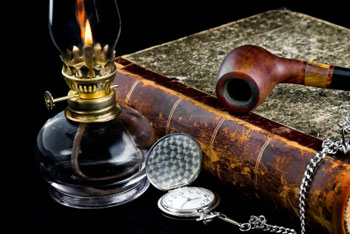 Doyle, while not being the greatest serial writer when it came to continuity, had a remarkable ability to flesh out his characters and to make them feel like real people. He gave his creatures human flaws, quirky habits and proclivities, and backstories that intrigued and involved the reader. One of the ways he did so was through the characters’ use of tobacco. This was a sensible thing to do as the use of tobacco in its many forms was quite popular at the time, along with the fact that peoples’ choices regarding their favorite pipes, tobaccos, cigars, etc. are very personal and reveal much about the individual.
Doyle, while not being the greatest serial writer when it came to continuity, had a remarkable ability to flesh out his characters and to make them feel like real people. He gave his creatures human flaws, quirky habits and proclivities, and backstories that intrigued and involved the reader. One of the ways he did so was through the characters’ use of tobacco. This was a sensible thing to do as the use of tobacco in its many forms was quite popular at the time, along with the fact that peoples’ choices regarding their favorite pipes, tobaccos, cigars, etc. are very personal and reveal much about the individual.
Holmes was an enthusiastic tobacco user. In the various stories and novels, the readers would read about his pipes and tobaccos, cigars, cigarettes and even snuff. In particular, Holmes pipe tobacco preference seems to be an odd one; he was known to smoke a black shag, which generally indicates a lower quality tobacco, as that’s what most shag tobaccos of his time were. But, in a way, it makes sense, too. Since he always smoked while contemplating a problem, it would seem that a stimulating smoke would be the way to go, and a common thread among cheaper pipe blends at the time was that they usually had a fairly decent nicotine content.
He routinely would smoke cigars in a more social setting, like after a dinner at a restaurant with Watson. Cigarettes were reserved for those times when he was full of nervous energy, or, in one special situation when he chain-smoked them so he could drop ash on the floor in front of a wall which covered a hidden passageway so he would know if someone had entered or left, as they would disturb the ashes.
Although I can’t recall any snuff use, it’s known that Holmes was given a bejeweled snuff box by a well-heeled client upon the successful completion of a case.
Speaking of Watson (Dr. John H. Watson, Holmes friend, fellow adventurer and biographer), he enjoyed his pipe often, and would join Holmes for the occasional cigar. Watson’s tastes ran to the less powerful Arcadia Mixture (with its fluffy, white ash), or, at times, what is referred to as "ship’s tobacco. I couldn’t find any direct information on it, it may be similar to Schipper’s Speciaal, a ribbon-cut mixture of Virginia, Burley and dark-fired Kentucky, made in the Dutch style. It would have been stronger than Arcadia, but not as heavy as the black shag.
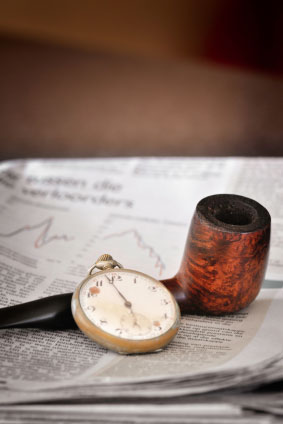 Holmes not only partook of the noble weed, but he was an expert of sorts about tobacco. He wasn’t into the blending or making of tobaccos, but he wrote a monograph in which he described how to identify 140 different tobaccos by examining the ash. In one story, he was able to get closer to the solution of a case by being able to identify an Indian trichinopoly cigar from a butt and its ash. Holmes also noted that a pipe was one of a person’s most intimate possessions and that one might infer a great deal about the individual by careful examination of his/her pipe.
Holmes not only partook of the noble weed, but he was an expert of sorts about tobacco. He wasn’t into the blending or making of tobaccos, but he wrote a monograph in which he described how to identify 140 different tobaccos by examining the ash. In one story, he was able to get closer to the solution of a case by being able to identify an Indian trichinopoly cigar from a butt and its ash. Holmes also noted that a pipe was one of a person’s most intimate possessions and that one might infer a great deal about the individual by careful examination of his/her pipe.
Holmes would have been what I call a "habitual" pipe smoker, rather than a "hobbyist". Most of you who are reading this would fall into my definition of a hobbyist; that is- someone who usually has a number of pipes, might even be a collector, and rarely smokes the same tobacco for an extended period of time. The hobbyist also likes to be well-informed about his/her pipes and tobaccos. The habitual smoker will have a relatively small number of pipes, rarely does maintenance on them, and smokes the same one or two blends all the time. In a nod to our politically correct times, the modernized BBC version of Holmes, played by Benedict Cumberbatch, partaking of … nicotine patches.
In the stories and novels, Holmes had three pipes- a clay, a briar and a cherrywood. His clay, a typical churchwarden style, was smoked often enough that it had colored until black. Watson referred to it as his "disreputable" clay, which he smoked when he was in a "disputatious" or argumentative mood. Little was said about his briar other than to be described as "oily", and next to no information was given about his cherrywood. This collection would seem to make sense considering that Holmes kept his tobacco in the toe of a Persian slipper.
So the obvious question that one might ask would be "What about the calabash?" Nowhere in any of the 60 Holmes pieces that Doyle wrote was there a mention of a calabash. How did Holmes become associated with the large gourd and meerschaum pipe? Because of William Gillette, an American actor who portrayed Holmes on the stage in the early 1900s. Gillette (who built the famous Gillette Castle in Connecticut) wanted a pipe that was easily visible to the audience, but with a deep, pronounced bend that wouldn’t block the audience’s view of his face, and would keep the smoke out of his eyes. With a proverbial wink and nod, if you got a view of the mantel at 221B in any of the 1980s Granada TV series Holmes stories, you would notice a calabash lying on it, but Jeremy Brett (as Holmes) never smoked it.
When thinking of famous pipe smokers, a number of people come to mind- MacArthur, Bing Crosby, Mark Twain- but who would have thought that the most renowned would be someone who never existed?
Related Article by Fred Brown: Sir Arthur Conan Doyle: Physician, Sherlock Holmes Author – Pipe Smoker
|
Russ Ouellette is the blender/creator of the Hearth & Home series of tobaccos for Habana Premium Cigar Shoppe and www.pipesandcigars.com in Albany, NY. He has been a pipe smoker and blender for over 30 years, and enjoys feedback from the pipe smoking public. You can reach Russ at russo@pipesandcigars.com or by calling 1-800-494-9144 on Monday, Wednesday and Thursday from 9 am to 5 pm and Friday from 1 pm to 5 pm. |




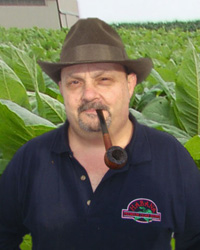



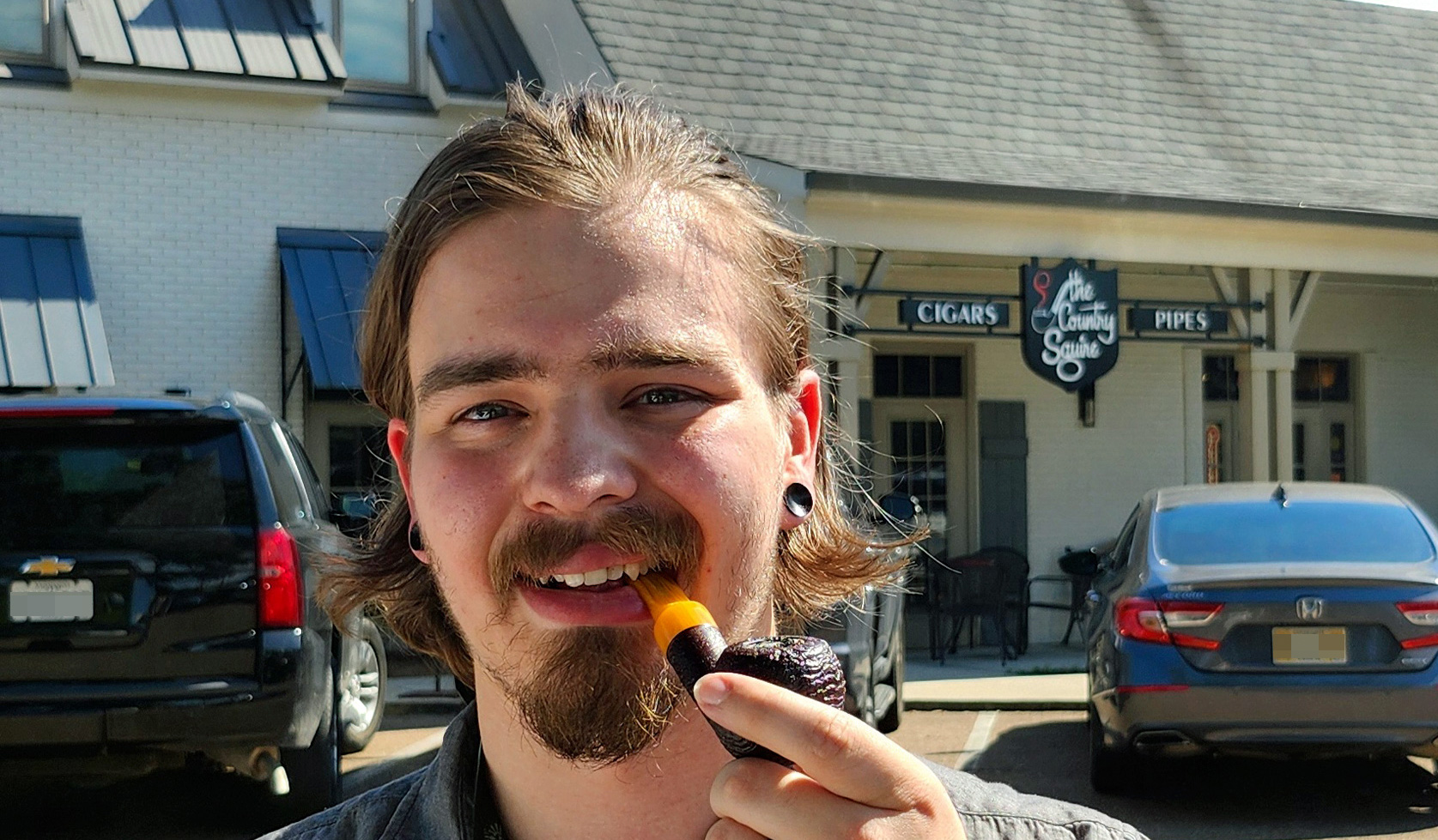

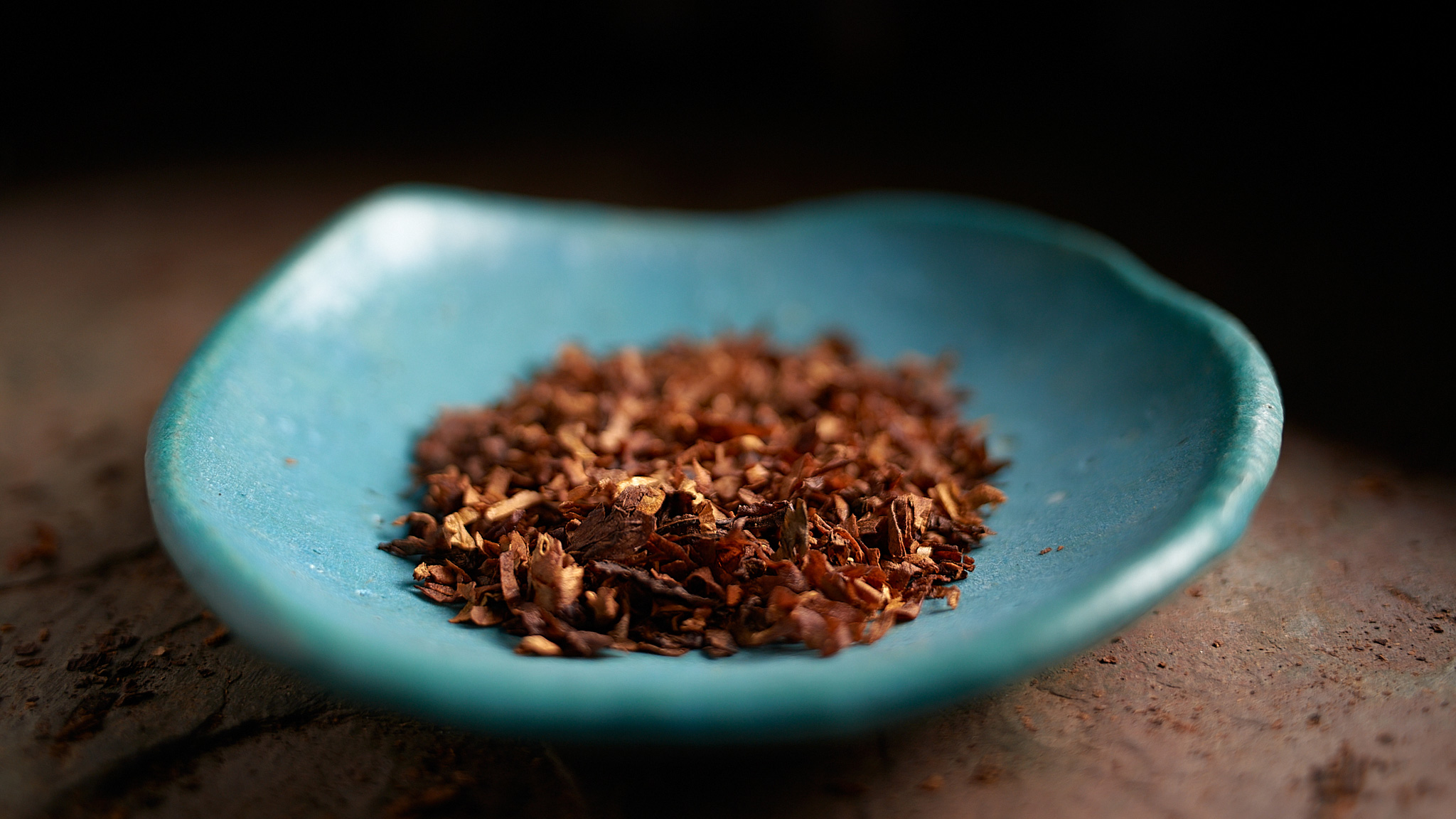
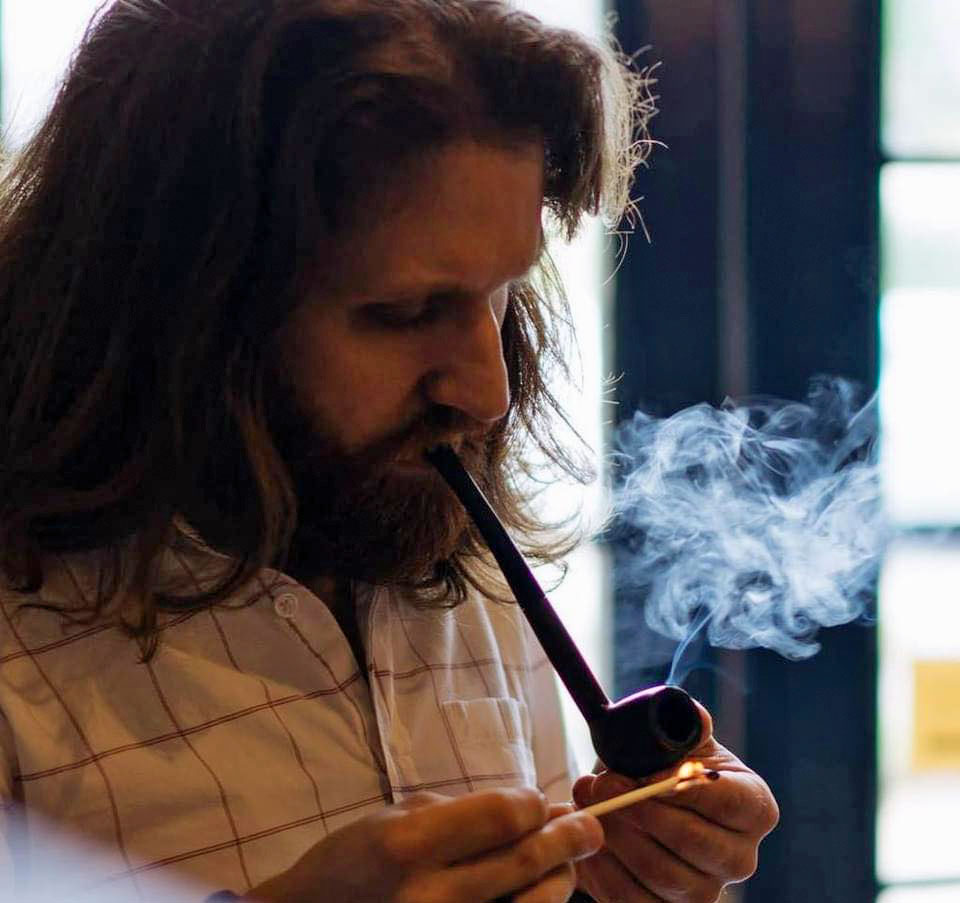






Thanks for the interesting and entertaining read Russ. I was easily visualizing everything you talked about. I’m in the mood for some Sherlock Holmes and pipe smoking now.
Great article. One point, however… Brett IS seen smoking that calabash in one of the Alps scenes in “The Final Problem.” That is the only time though.
Excellent article Russ. Glad to know you are a Sherlockian as well. One correction…Holmes smoked his Cherrywood when he was in a disputatious mood. I belive it is mentioned in “The Adventure of The Copper Beeches.” Hope to see you next week in Richmond!!!!
Funn
Great, Great! Sherlock Holmes has intrigued me since youth. I think I’ve read all of Doyle’s detective stories.
Oh and I visited Gillette Castle this summer. A truely amazing house!
A pleasant read, thanks. Sometimes you see Brett smoking a short clay pipe when out impersonating people, what did the original do in those situations? Bringing the churchwarden seems difficult due to its fragility.
Oh, and Brett actually did smoke the Calabash, in the episode where he and Watson runs from Moriarty. 🙂 I recently watched all 7 series 😉
Nice
Ships Tobacco was a very strong tobacco for sailors.
Similar to the Gawith Hoggarth Twist.
Great article!
Good read thanks
Great article! It’s amazing how Holmes is as poplular as he was 100 years ago! If not even more popular.
Nice article.
Excellent article
Great article.
Very enjoyable read.
Great article. Easy read and rather inspiring. I had to pull out my Sherlock Holmes collection and read them and smoke a bowl (or two) 🙂
Can we please put the ‘Jeremy Brett never smoked a calabash’ falacy to rest? As others have said, he most certainly did, in the Final Problem, in which he embraced all the Holmes cliches (deerstalker, etc.). He even gives the pipe a pomo glance and grin. See this video: http://www.youtube.com/watch?v=vIO0vrwhJ8s around the 35:30 minute mark.
Fun Read. I never knew that the Calabash came from a stage actor. I just thought it was a pipe Basil Rathbone used during his portrayal of Sherlock Holmes.
Thanks, Mr. Ouellette, for a stimulating and wonderfully written article on one of the most celebrated pipe smoking characters in all of English literature. I took it as a wake up call to re-establish my familiarity with the entire Sherlock Holmes canon. It’s been a good many years since I ranged the dismal, fog-choked wynds of London following my erstwhile hero’s triumphs. The season is right, and the pipes and tobacco are at the ready; now, if only I had a deerstalker! 🙂
love this article
Great article, Russ. Now I want to go and sample McClelland’s 221B Arcadia (http://luxurytobaccoreviews.com/t/mcclelland-221b-series-arcadia). I wonder if it has fluffy white ash?
Simon
It could turn out that the Holmes character could end up being the signature role of three different actors (Rathbone, Brett, and Cumberbatch).
Nice article, Russ.
Now that was an entertaining read. I read the entire canon every five years or so. Now I’m inspired to read it again. Winter is coming and the rainy relatively dark streets of Vancouver create the perfect atmosphere for a person with Holmes fantasies. My 1792 flake will have to play the role of his black shag.
I wasn’t a pipe smoker when I read it last. I’m looking forward to this reading season.
Also, I learned that I’m a “habitual” pipe smoker. Three pipes and a tendency to smoke the same two blends most of the time. Several times a day, keeps the cigarettes away. 🙂
Russ, thanks for a great read. Always insightful and entertaining. Cheers, Kashmir.
Another great article, Russ!
Thanks.
There were/ are truly many great persons, men and women, who enjoyed the pleasures of the pipe.
Great Russ!
Holmes did however have the most appalling pipe smoking habits: his baccy was stored in the toe of a Persian slipper fastened to the mantlepiece above the fire – probably the dryest place on the planet (perhaps he also smoked SG baccy’s for which I need to borrow his fireplace) and to keep dottles drying on the same mantlepiece for a next morning smoke is gross! – makes you wonder about Doyle’s personal smoking habits!
Nice Russ, one interesting thing which correspond with your comment about calabash is that I have one briar pipe in the shape of calabash and this one is dedicated to Peterson´s Sherlock Holmes blend 🙂
I enjoyed the article very much! Now it’s time to light a pipe & dig out my Sherlock Holmes volumes! Thanks, Russ
Russ,wonderful article. So what if there crops up some small innacuracy in your article on the great detective.
Holmes and Watson were not perfect either! Saw you in Richmond and thank you for a free fill up of one of your wonderful tobacco samples.
Nicely written and informative. I have read some of the Holmes stories and they’re quite entertaining. Reading Simenon’s Maigret novels now. So nice to smoke your pipe and read stories where pipe smoking is the norm. Too bad about the “nicotine patch” version of Holmes. How awful! That’s like a Santa with a clean-shaven face. Who wants to see that?!
Quite an ejoyable article.
It appears that Basil Rathbone smoked Peterson’s, mostly bents in the movies he portrayed Sherlock Holmes.
Really enjoyed your article. I am a big Jeremy Brett fan and thought he made the quintessential Sherlock.
Enjoyed the article. Funny how mental images from movies, makes us believe it is accurate 100% of the time to actual events and history, AND the author!
Sorry to say it but im going to have to agree with funn, it was in the copper beeches stiry, its the cherry wood is for his bad moods, his clay is his great comforter as watson says
Great read, thank you! The famous deerstalker cap of stage and screen was also never mentioned by name in the original short stories/novels. Classic stories! Thanks again.
Thanks Russ for a wonderfully written article! I just got “The Complete Sherlock Holmes” for the holidays and am thoroughly enjoying the reads, and inspired me to order some Peterson’s Sherlock Holmes! Now where’s my Persian slipper??